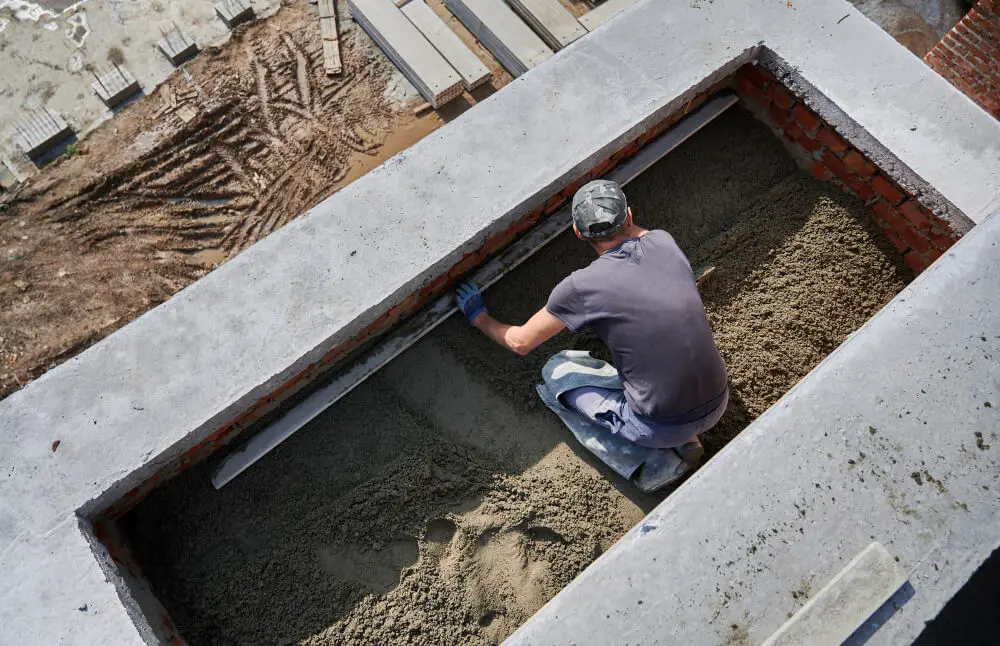A home is only as stable as the ground beneath it. Most foundation problems start so quietly, you’d never know something was wrong until doors start sticking, walls crack, or water creeps into your basement. While these issues can be subtle at first, ignoring them can lead to serious structural damage and expensive foundation repair.
In this article, we’ll walk through eight early signs of foundation trouble that homeowners often overlook and why basement waterproofing should be part of your prevention strategy.
Why Foundation Issues Should Never Be Ignored
Homeowners often assume foundation problems are rare or only happen to older homes. But that’s not the case. Foundation settlement is one of the most common structural issues found during home inspections. Even minor signs can hint at bigger structural changes happening under your feet.
Although minor cracks or sloping floors seem like cosmetic issues, they usually point to deeper issues caused by reasons such as shifting soil, water pressure, or poor construction. When these signs are left untreated, they can lead to extensive damage, mold infestations, and even complete foundation failure. That’s why addressing early warning signs with foundation repair and basement waterproofing solutions is critical.
8 Early Warning Signs of Foundation Trouble
Below are eight signs that often appear early in foundation failure that many homeowners overlook, and why basement waterproofing should be part of the conversation:
1. Cracks in Walls, Floors, or Ceilings
Cracks are one of the most noticeable early signs and one of the easiest to overlook. Some cracks may look insignificant or harmless, but others point to real trouble. Horizontal cracks in basement walls usually mean outside soil is pushing in by exerting pressure. Diagonal cracks above doors or windows suggest uneven settling. Even floor tiles that suddenly crack could be reacting to subtle shifts below. The general rule is that if a crack is wider than 1/8 inch or continues to grow, it is worth investigating.
2. Uneven or Sloping Floors
You might not notice an uneven floor until you drop something that rolls unexpectedly. But a subtle slope or a soft spot underfoot often means your foundation isn’t level anymore. This can happen when soil beneath the home shifts or erodes, leaving parts of the foundation unsupported. Over time, uneven floors can lead to bigger structural issues, especially if ignored.
3. Doors and Windows That Stick or Don’t Close Properly
Doors and windows are often the first clear indicators that a foundational issue is occurring. When your house shifts, frames can twist just enough to make latches misalign or corners jam. If more than one door or window starts sticking, or if they suddenly won’t shut without force, that’s not just seasonal swelling; it’s often your foundation moving underneath.
4. Gaps Around Window Frames or Exterior Doors
Notice daylight peeking through the edge of your front door? Gaps around windows or doors may seem like cosmetic flaws, but they often indicate that parts of the structure are shifting apart due to underlying foundation stress. As the foundation moves, it creates stress on framing, opening up gaps that let in air, water, and pests. They may start small, but can grow quickly if the underlying issue isn’t fixed.
5. Water in the Basement or Crawlspace
Persistent water intrusion is both a symptom and a cause of foundation damage. One of the major signs to look out for includes damp walls or white, chalky efflorescence. Other signs include pools of water after rain, mold growth, and musty smells. Water builds up around your home’s perimeter due to poor drainage or heavy rainfall. This might further increase the hydrostatic pressure that causes the basement walls to crack, bow, or leak. Investing in basement waterproofing methods, such as sump pumps, drainage systems, and sealed walls, protects against this.

6. Bowing Walls or Leaning Chimneys
If your basement walls appear to curve inward or your chimney leans away from the house, it’s time to call a professional. These are signs of severe structural stress. Bowing walls often occur due to wet soil pressing against foundation walls over time. Leaning chimneys may indicate that the soil beneath the chimney base is sinking faster than the rest of the structure. These issues often require advanced foundation repair techniques like wall anchors, steel bracing, or piering systems.
7. Cracked or Compromised Exterior Brickwork
Check outside your house, especially the brick or siding. Do you see stair-step cracks in the mortar of the brick? Are the bricks showing signs of being displaced or separating from the trim? These signs mirror the internal structural movement and may also lead to water intrusion. While repointing can temporarily fix mortar joints, repeated cracking suggests that deeper structural work, such as pier installation, may be needed.
8. Musty Smells or Mold Growth in the Basement
You don’t need visible water to have a moisture problem. A musty smell or random patches of mold usually point to moisture trapped behind walls or under floor coverings. This is more than a smell issue; it’s a sign that your basement is not staying dry. Mold thrives in humid environments, weakening wood, damaging drywall, and affecting indoor air quality. The most common moisture source that promotes mold is water seeping through the foundation; thankfully, this is a problem that usually can be corrected with properly installed basement waterproofing and drainage correction.
What Causes Foundation Damage?
Understanding the root cause of these problems helps with prevention and long-term repair. Common factors include:
- Soil movement: Expansive clay soils swell with water and shrink when dry, causing the foundation to heave or sink.
- Water damage: Poor drainage or leaking pipes saturate the soil and add weight or erosion.
- Construction flaws: Shallow footings, poor compaction, or cheap materials can cause a home to settle prematurely.
- Tree roots: When large trees are planted too close to the home, they can absorb moisture unevenly, destabilizing the soil.
In many cases, a combination of factors like poor grading and heavy rain can accelerate damage. This is why foundation repair should often go hand in hand with basement waterproofing solutions that manage water proactively.
What to Do If You Notice These Signs
The earlier you take action, the simpler and cheaper the fix. Start by making a detailed note of what you’re seeing. Take photos of cracks and gaps, test doors and windows regularly, and check the basement after rainstorms.
Next, assess your exterior. Make sure your gutters aren’t clogged, your downspouts extend several feet from the house, and your yard slopes away from the foundation. But don’t stop at surface-level fixes. If you’re spotting more than one of these warning signs, it’s time to bring in a professional.
A qualified contractor can evaluate the issue and recommend the right foundation repair strategy, whether it’s installing piers, bracing walls, or leveling the slab. If moisture is part of the problem, adding a reliable basement waterproofing system is equally important to prevent further damage.
Avoid DIY quick fixes like patching cracks with sealant or caulk without addressing what caused them. It might buy time, but it won’t solve the root issue.
Final Thoughts
Foundation problems don’t appear overnight; however, they rarely fix themselves once they do. That tiny crack in your basement wall or the door that sticks a little might be your home’s way of warning you before the damage gets worse. By paying attention to these eight early signs and considering professional foundation repair and basement waterproofing, you can stop a minor issue from becoming a major crisis. Your foundation supports everything. Taking care of it means protecting your home, safety, and peace of mind.






